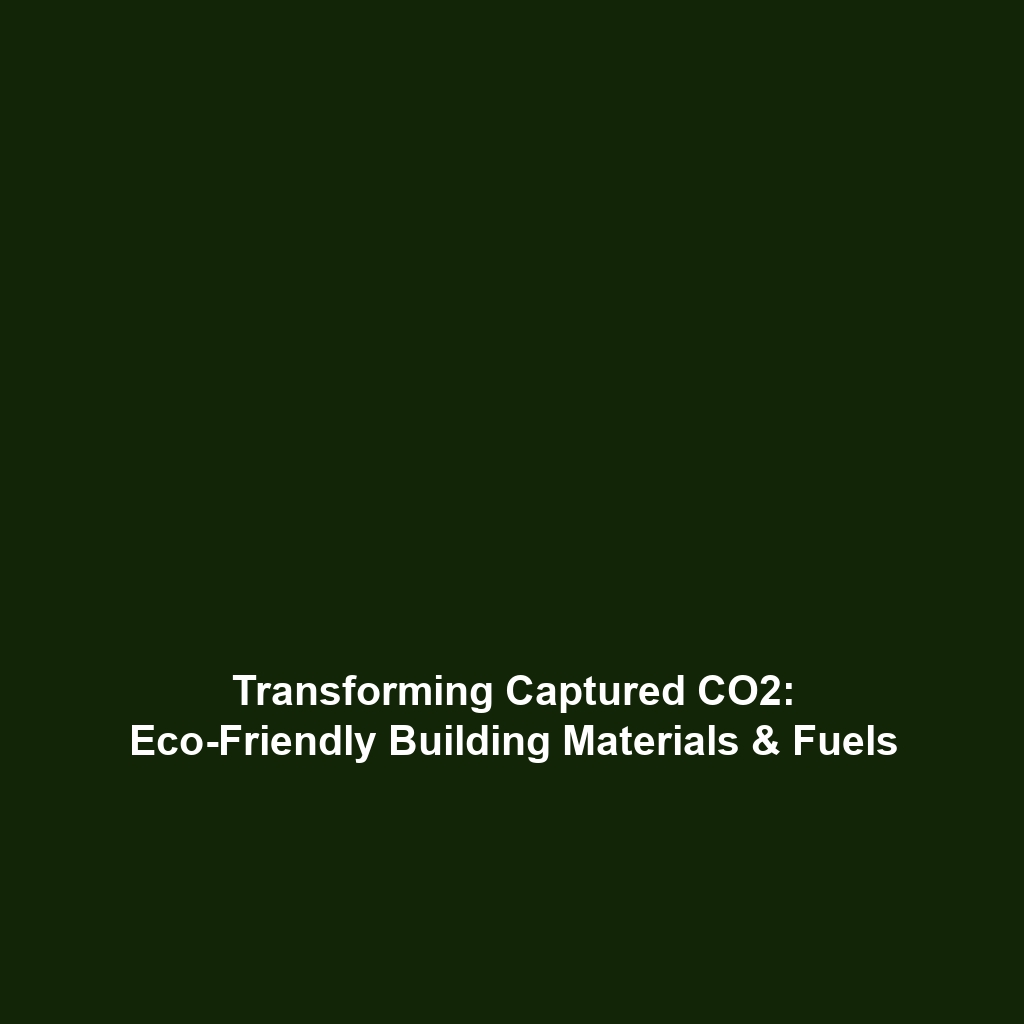EOR: A Major Market for Captured CO2 in the U.S. and Canada
Introduction
Enhanced Oil Recovery (EOR) stands as one of the largest markets for captured CO2, especially in the United States and Canada. This method not only contributes to the economic viability of oil extraction but also plays a crucial role in Carbon Capture & Storage (CCS) efforts. By using captured CO2 to enhance oil production, EOR helps mitigate greenhouse gas emissions, thereby addressing climate change concerns. The integration of EOR with CCS represents a significant advancement in sustainable energy practices, positioning it as a pivotal solution in the transition towards a low-carbon economy.
Key Concepts
Understanding Enhanced Oil Recovery (EOR)
EOR refers to techniques that increase the amount of crude oil that can be extracted from an oil reservoir. EOR involves injecting CO2 into oil fields, which increases pressure and decreases oil viscosity, facilitating easier extraction. This process fits snugly within the broader category of Carbon Capture & Storage (CCS), as it utilizes captured CO2 from industrial processes to benefit oil recovery, thus embedding sustainability into traditional oil extraction methods.
EOR’s Role in Carbon Capture & Storage (CCS)
EOR not only enhances oil recovery but also serves a dual purpose by providing a market for CO2 captured from power plants and industrial sources. The captured CO2 can be securely stored underground, ensuring it does not re-enter the atmosphere and contribute to climate change.
Applications and Real-World Uses
The practical applications of EOR within CCS are significant, particularly in North America.
- Injection Techniques: Companies like Occidental Petroleum and ExxonMobil utilize CO2 injection to improve oil recovery rates significantly.
- Storage Solutions: The captured CO2 is stored deep underground, where it is monitored to ensure it remains safely contained.
- Pilot Projects: Initiatives in Alberta, Canada, demonstrate the feasibility of large-scale CO2 injection for EOR, showcasing its potential to align with environmental goals.
Current Challenges
While EOR presents a promising opportunity for utilizing captured CO2, it is not without its challenges:
- Economic Viability: The cost of capturing, transporting, and injecting CO2 can hinder the widespread adoption of EOR.
- Regulatory Hurdles: Complex regulations surrounding CO2 storage and EOR can impede project development.
- Public Perception: There may be concerns regarding the safety of underground CO2 storage and its long-term environmental impact.
Future Research and Innovations
Looking ahead, there are several exciting innovations in EOR and CCS that may redefine the landscape:
- Improved Capture Technologies: Advancements in CO2 capture technologies could lower costs and enhance efficiencies, making EOR more attractive.
- Next-Gen Solutions: Research into alternative methods for CO2 utilization could expand applications beyond oil recovery.
- Geological Assessments: Ongoing studies to identify optimal geological formations for CO2 storage are critical for enhancing EOR’s safety and effectiveness.
Conclusion
Enhanced Oil Recovery (EOR) emerges as a vital market for captured CO2, especially across the U.S. and Canada, bridging the gap between energy production and environmental stewardship. As we advance toward innovative solutions within Carbon Capture & Storage (CCS), the integration of EOR will be fundamental in achieving global climate targets. For further insights on CCS developments and technologies, explore our resources on Carbon Capture Technologies and Environmental Impact Studies.

